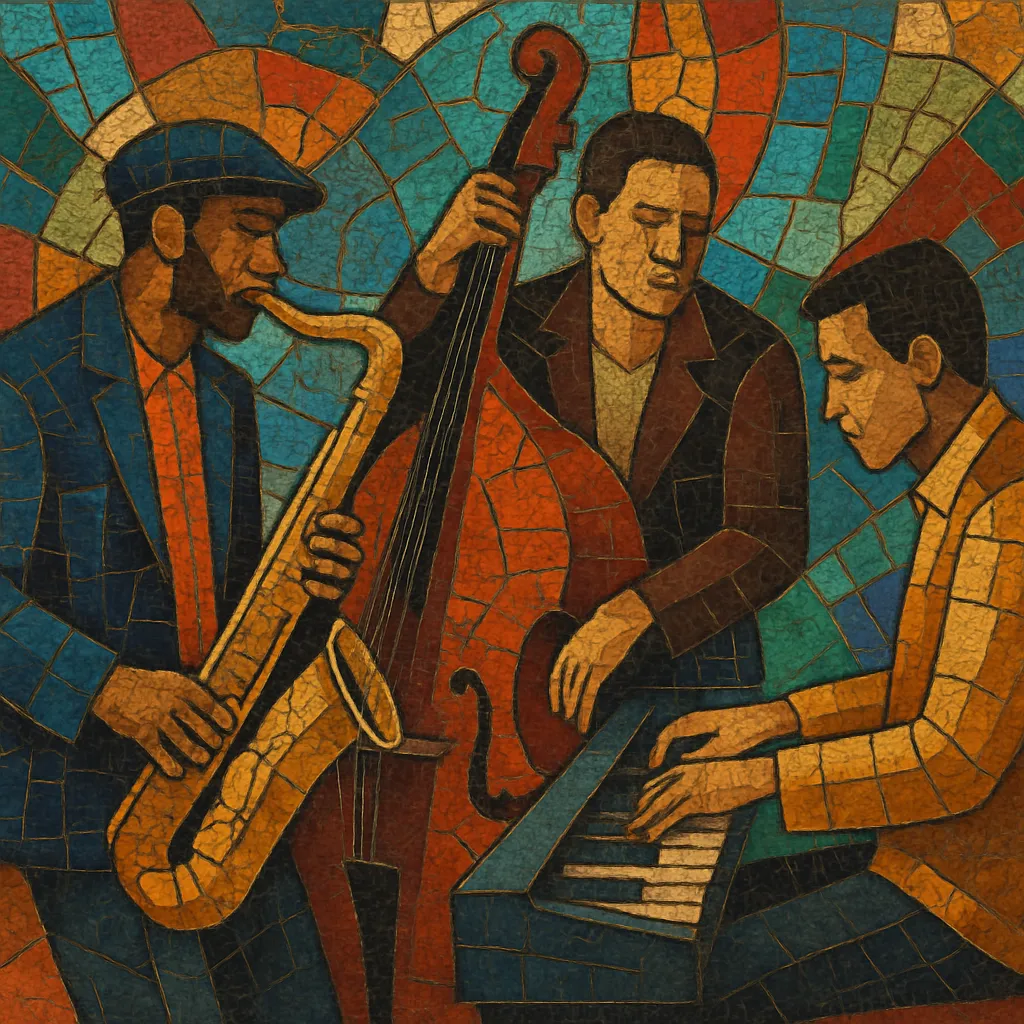
Crossover jazz is a pop-leaning branch of jazz designed to reach listeners beyond the traditional jazz audience. It blends melodic hooks, radio-friendly song structures, and polished production with jazz harmony and concise improvisation.
Typical timbres include lead saxophone or clean electric guitar supported by Fender Rhodes or other electric pianos, warm synthesizers, and a tight rhythm section rooted in funk, R&B, and soft rock. Compared with jazz fusion it is more melody-first and chart-oriented, and compared with later smooth jazz it often carries a more assertive groove and clearer ties to mainstream jazz phrasing.
String sections, background vocals, and meticulous studio sheen are common, emphasizing accessibility while still showcasing tasteful solos and sophisticated chord colors.
The idea of “crossover” came from the chart term for records that crossed over from one format to another. As electric instruments and funk/R&B grooves entered jazz, producers and labels sought a more radio-friendly presentation. Creed Taylor’s CTI Records and later GRP Records helped codify a polished sound that married jazz harmonies and concise solos to pop structures, string arrangements, and audiophile production.
In the mid-to-late 1970s, major hits proved the commercial potential of the style. George Benson’s “Breezin’” (1976), Chuck Mangione’s “Feels So Good” (1977), and Grover Washington Jr.’s work (culminating in “Winelight,” 1980) exemplified lyrical melodies, tight R&B backbeats, and streamlined forms that could live on both jazz and pop radio. Studio players and bandleaders such as Bob James, The Crusaders, Earl Klugh, and Lee Ritenour refined the template: smooth leads, Rhodes/synth pads, and tasteful, compact improvisations.
Through the 1980s, the sound aligned with emerging “contemporary jazz” and “smooth jazz” radio formats, bringing the crossover aesthetic to a broad adult-contemporary audience. Artists like David Sanborn and Al Jarreau bridged vocal and instrumental approaches, while ensembles such as Spyro Gyra found success with sleek, groove-forward arrangements. The style drew criticism from purists for its commercial orientation, yet it sustained jazz’s mainstream visibility during an era when pop production values dominated.
While the label “crossover jazz” is used less as a strict genre name today, its DNA continues in smooth jazz, jazz-pop, and sophisticated pop styles. Streaming-era playlists (e.g., “chill jazz,” “coffee table jazz”) often trace back to the crossover aesthetic: plush textures, melodic clarity, and compact solos. The approach also informed international scenes, from Japanese city pop to elements of sophisti-pop, demonstrating how jazz harmony and R&B grooves can be framed for mainstream appeal.

